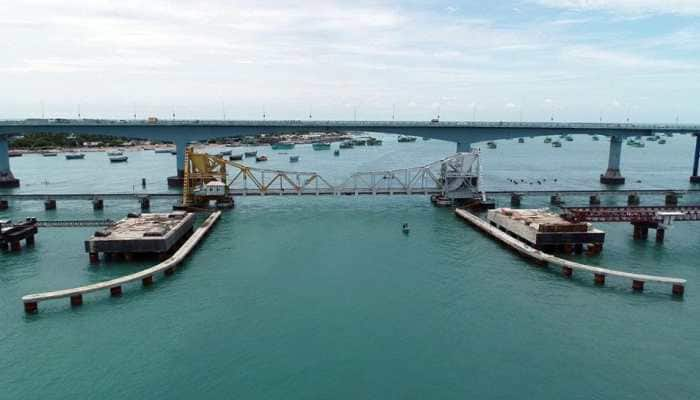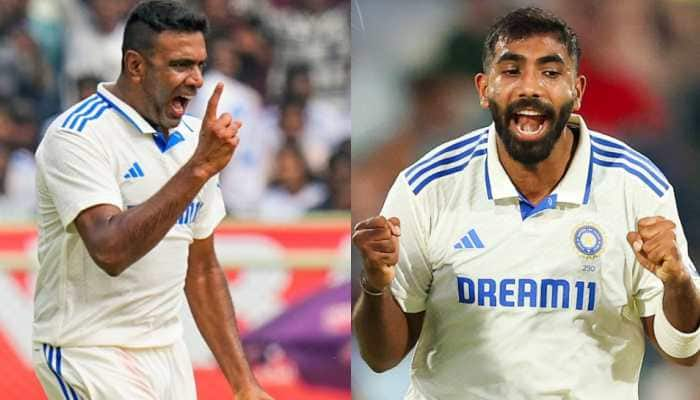Building Shanghai out of Mumbai: Kite flying?
India is appraising to build Shanghai and Paris out of metros like Delhi, Mumbai, Chennai, Kolkata, Bangalore.
Trending Photos
)
 Rajan Sharma / Zee Research Group
India is appraising to build Shanghai and Paris out of metros like Delhi, Mumbai, Chennai, Kolkata, Bangalore. But this fascinating idea of world class metropolis seems dawdling. In a mega city, where basal amenities are abominable, the challenges to live above dream seem absurd.
As per Census of India 2010, 30 percent of the total population in India is classified as ‘conservatively’ urban whereas in China the figure stands at 45 percent, in Indonesia at 54 percent, 78 percent in Mexico and 87 percent in Brazil.
A national report on ‘Indian Urban Infrastructure and Services’ under the Ministry of Urban Development, suggests that India’s urban population as presently defined will be close to 600 million by 2031, more than double that in 2001. Among the major states Tamil Nadu is most urbanised state of India with 54.4 percent followed by Maharashtra (46.2 per cent) and Gujarat (40.3 per cent). Other than that, Greater Mumbai recorded a total population of 22.7 million in 2011 followed by Kolkata (18.3 million), Delhi (17.9 million), Chennai (9.1million) and Hyderabad (7.9 million).
In view of the increase in population in coming years challenges ranging from proper sanitation to roads and infrastructure development would be faced. Daily sources of survival like water have been a challenge since many years.
The Indian Urban Infrastructure and Services report said that 64 percent of urban population is covered by individual connections and stand posts in India. Duration of water supply in Indian cities ranges from one hour to six hours, compared with 24 hours in Brazil and China and 22 hours in Vietnam. Most Indian cities do not have metering for residential water connections and non-revenue water (NRW) accounts for 50 per cent of water production, compared with five per cent in Singapore.
Worst than that, in mega cities like Delhi loss of water due to leakage and unaccountable purposes (illegal connections) stands at a hefty 30 per cent of what’s available. As a result, long water cuts across several factions in city add further to people’s woes. To compensate, private tankers are employed in several areas which are making profits through unfair means.
There is an acute problem of sanitation in Indian cities. With very poor sewerage networks, a large number of the urban poor still depend on public toilets. As per reports about 50 million people in urban India defecate in the open every day. 4861 out of the 5161 cities/towns in India do not have even a partial sewerage network. A study by the Ministry of Urban Development, finds that 23 million children below the age of 14 in urban India are at risk from poor sanitation. The same study finds that 8 million children in urban areas are at risk from poor water supply. Infant mortality at 42 deaths per 1000 live births, though lower than in rural areas, continues to be unacceptably high (IIPS 2005-06).
As far as urban transport and road development is concerned, inadequate investment in urban transport and roads have worsened the situation of traffic and accident cases in cities. According to the Ministry of Road Transport and Highways, about 60 per cent of freight and 87 per cent passenger traffic are carried by road.
Although National Highways constitute only about 2 per cent of the road network, they carry 40 per cent of total road traffic. The share of road traffic in total traffic has grown from 13.8 per cent of freight traffic and 15.4 per cent of passenger traffic in 1950-51 to an estimated 62.9 per cent of freight traffic and 90.2 per cent of passenger traffic by the end of 2009-10. Moreover, the motor vehicle population has increased 100 times from 1951 to 2004, while the road network has expanded only eight times.
Government of India has proposed several schemes such as “Jawaharlal Nehru National Urban Renewal Mission” (JnNURM), for city modernisation. The scheme has been applied across 65 mission cities across India inclined towards the idea of making them world class. But since 2005, the scheme has not performed up to the mark.
According to JnNURM analysis, under Urban Infrastructure Governance (UIG) sub mission the maximum number of projects have been sanctioned under water supply sector (27 per cent) followed by Roads/Flyovers at 21 per cent. Whereas, highest funds have been released for water supply, sewerage, drainage/storm water drainage which constitutes around 65% of the amount sanctioned. The lowest have been made for parking - 0.2%.
Even then many such projects are lying in the pipeline because many states across India don’t even set up project management and implementation units. For modernisation of urban cities, empowering Urban Local Bodies (ULBs) is conspicuous and hence a major lacking. Most ULBs are not in a position to take over functions like roads and bridges, water supply due to lack of mechanism and requisite skills. Lack and misuse of funds released also stands as a major weakening. Hence, several steps need to be taken to improve ULBs across all states.
A city level sanctioning and monitoring committee needs to be considered for decent usage of funds released for development purposes. Moreover, formulation of citizen charter could also prevent corruption in working hours.
Such steps could improve functioning of schemes like JnNRUM. Problems of heavy traffic, sanitation, water remain in urban cities. Dreams of making cities world class continues to be a dream and common man frustrated with day to day urban issues has become resilient to tackle them.
Rajan Sharma / Zee Research Group
India is appraising to build Shanghai and Paris out of metros like Delhi, Mumbai, Chennai, Kolkata, Bangalore. But this fascinating idea of world class metropolis seems dawdling. In a mega city, where basal amenities are abominable, the challenges to live above dream seem absurd.
As per Census of India 2010, 30 percent of the total population in India is classified as ‘conservatively’ urban whereas in China the figure stands at 45 percent, in Indonesia at 54 percent, 78 percent in Mexico and 87 percent in Brazil.
A national report on ‘Indian Urban Infrastructure and Services’ under the Ministry of Urban Development, suggests that India’s urban population as presently defined will be close to 600 million by 2031, more than double that in 2001. Among the major states Tamil Nadu is most urbanised state of India with 54.4 percent followed by Maharashtra (46.2 per cent) and Gujarat (40.3 per cent). Other than that, Greater Mumbai recorded a total population of 22.7 million in 2011 followed by Kolkata (18.3 million), Delhi (17.9 million), Chennai (9.1million) and Hyderabad (7.9 million).
In view of the increase in population in coming years challenges ranging from proper sanitation to roads and infrastructure development would be faced. Daily sources of survival like water have been a challenge since many years.
The Indian Urban Infrastructure and Services report said that 64 percent of urban population is covered by individual connections and stand posts in India. Duration of water supply in Indian cities ranges from one hour to six hours, compared with 24 hours in Brazil and China and 22 hours in Vietnam. Most Indian cities do not have metering for residential water connections and non-revenue water (NRW) accounts for 50 per cent of water production, compared with five per cent in Singapore.
Worst than that, in mega cities like Delhi loss of water due to leakage and unaccountable purposes (illegal connections) stands at a hefty 30 per cent of what’s available. As a result, long water cuts across several factions in city add further to people’s woes. To compensate, private tankers are employed in several areas which are making profits through unfair means.
There is an acute problem of sanitation in Indian cities. With very poor sewerage networks, a large number of the urban poor still depend on public toilets. As per reports about 50 million people in urban India defecate in the open every day. 4861 out of the 5161 cities/towns in India do not have even a partial sewerage network. A study by the Ministry of Urban Development, finds that 23 million children below the age of 14 in urban India are at risk from poor sanitation. The same study finds that 8 million children in urban areas are at risk from poor water supply. Infant mortality at 42 deaths per 1000 live births, though lower than in rural areas, continues to be unacceptably high (IIPS 2005-06).
As far as urban transport and road development is concerned, inadequate investment in urban transport and roads have worsened the situation of traffic and accident cases in cities. According to the Ministry of Road Transport and Highways, about 60 per cent of freight and 87 per cent passenger traffic are carried by road.
Although National Highways constitute only about 2 per cent of the road network, they carry 40 per cent of total road traffic. The share of road traffic in total traffic has grown from 13.8 per cent of freight traffic and 15.4 per cent of passenger traffic in 1950-51 to an estimated 62.9 per cent of freight traffic and 90.2 per cent of passenger traffic by the end of 2009-10. Moreover, the motor vehicle population has increased 100 times from 1951 to 2004, while the road network has expanded only eight times.
Government of India has proposed several schemes such as “Jawaharlal Nehru National Urban Renewal Mission” (JnNURM), for city modernisation. The scheme has been applied across 65 mission cities across India inclined towards the idea of making them world class. But since 2005, the scheme has not performed up to the mark.
According to JnNURM analysis, under Urban Infrastructure Governance (UIG) sub mission the maximum number of projects have been sanctioned under water supply sector (27 per cent) followed by Roads/Flyovers at 21 per cent. Whereas, highest funds have been released for water supply, sewerage, drainage/storm water drainage which constitutes around 65% of the amount sanctioned. The lowest have been made for parking - 0.2%.
Even then many such projects are lying in the pipeline because many states across India don’t even set up project management and implementation units. For modernisation of urban cities, empowering Urban Local Bodies (ULBs) is conspicuous and hence a major lacking. Most ULBs are not in a position to take over functions like roads and bridges, water supply due to lack of mechanism and requisite skills. Lack and misuse of funds released also stands as a major weakening. Hence, several steps need to be taken to improve ULBs across all states.
A city level sanctioning and monitoring committee needs to be considered for decent usage of funds released for development purposes. Moreover, formulation of citizen charter could also prevent corruption in working hours.
Such steps could improve functioning of schemes like JnNRUM. Problems of heavy traffic, sanitation, water remain in urban cities. Dreams of making cities world class continues to be a dream and common man frustrated with day to day urban issues has become resilient to tackle them.
Stay informed on all the latest news, real-time breaking news updates, and follow all the important headlines in india news and world News on Zee News.
Advertisement
Live Tv
Advertisement







)
)
)
)
)
)
)
)
)
)
